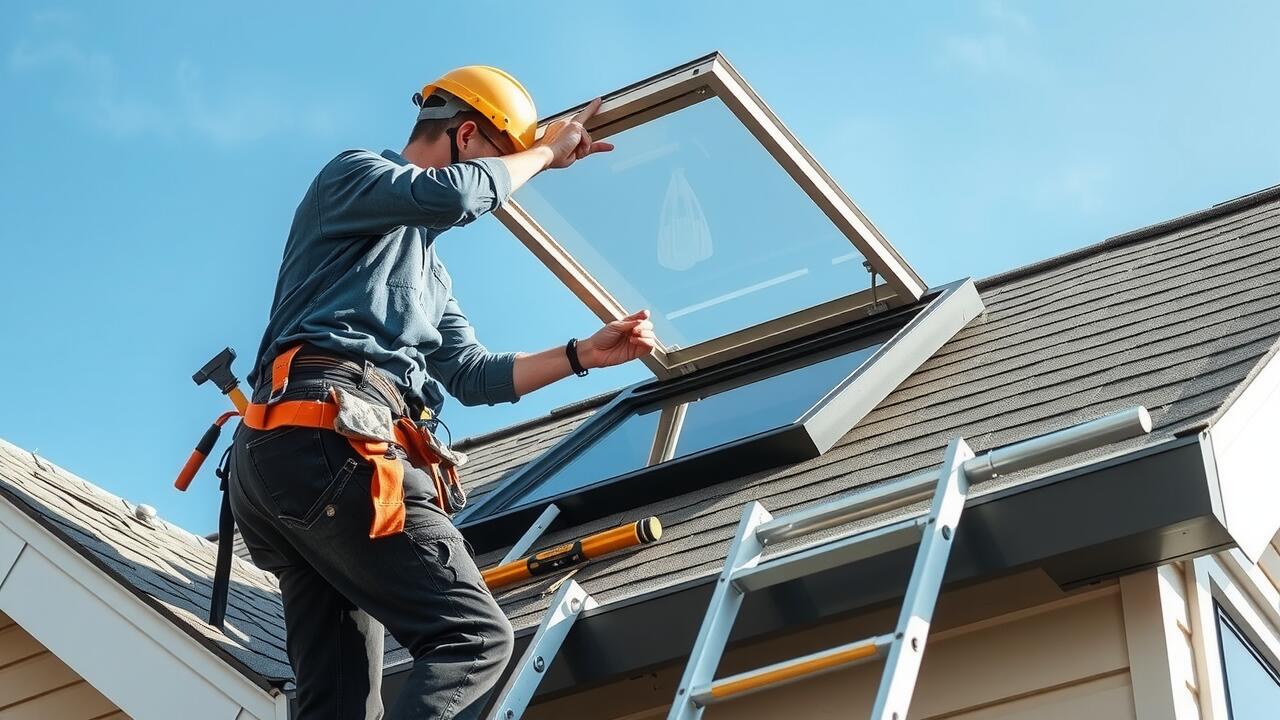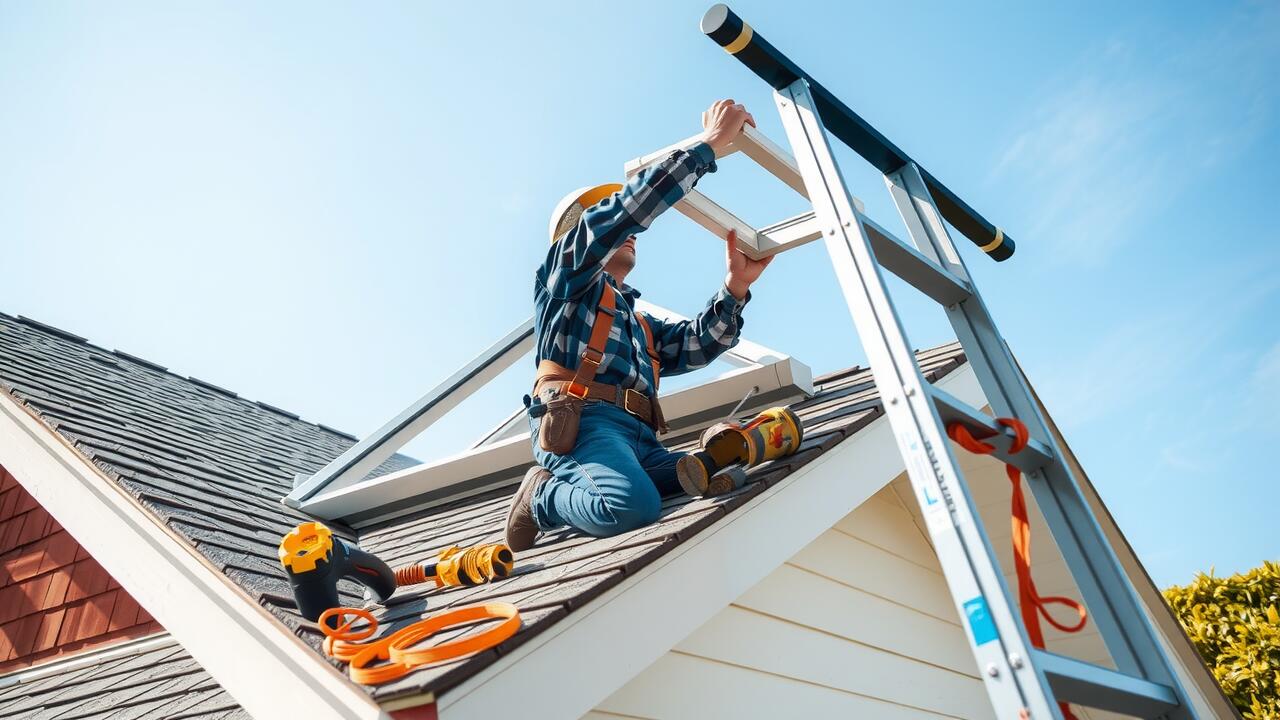
Maintenance Requirements
Skylight installation requires regular maintenance to ensure they function properly and enhance the overall atmosphere of the home. Homeowners should routinely inspect the seals and flashing around the skylights to prevent leaks. Cleaning the glass is essential for maintaining natural light, as dirt and debris can significantly diminish brightness. Depending on the type of skylight, the cleaning process may vary, requiring specific tools or solutions to avoid damage.
In addition to visual upkeep, it is crucial to monitor the area around the skylights for any signs of moisture or condensation. Proper ventilation can play a key role in extending the lifespan of skylights and preventing issues like mould growth. Regular checks of the frame and glazing will help detect any potential problems early on. Staying proactive with these maintenance tasks ensures that the benefits of skylight installation continue to enhance living spaces for years to come.
Keeping Skylights in Optimal Condition
Regular maintenance is essential for skylights to ensure they continue to function efficiently and enhance the beauty of a home. Homeowners should clean the glass surfaces periodically to remove dirt and debris, which can impede natural light entry. Inspecting the seals around the skylights is also important to prevent leaks. Over time, these seals can wear out and require replacement to maintain the integrity of the installation.
During skylight installation, proper waterproofing techniques should be applied to minimise the risk of leaks. Regular checks on flashing, the material that directs water away from the skylight, are crucial as well. If any signs of wear or damage are noticed, addressing these issues promptly can help avoid costly repairs in the future. Maintaining good ventilation around the skylight can also prevent issues related to condensation and moisture build-up.
Choosing the Right Location for Skylights
The placement of skylights plays a crucial role in their effectiveness and overall appeal. Selecting the right location requires careful consideration of the room’s layout and purpose. Areas that benefit from natural light, such as living rooms, kitchens, and bathrooms, are ideal candidates for skylight installation. Additionally, the orientation of the home can affect how much sunlight enters through the skylights. South-facing skylights generally allow more direct sunlight, which can warm up spaces during colder months but may also require shading or ventilation options to prevent overheating in the summer.
When deciding where to install skylights, it is essential to take into account the roof’s structure and any potential obstructions, such as trees or nearby buildings. Slope and angle are also important factors, as they influence how rainwater will drain away from the skylight, thereby reducing the risk of leaks. Proper ventilation and access for maintenance should also be part of the planning process for skylight installation, ensuring that these features remain practical and functional over time.
Factors to Consider When Installing
When considering skylight installation, the location of the skylight is crucial. Ideal placement can significantly enhance the natural light entering a room, highlighting architectural features and improving energy efficiency. Assessing roof angles and nearby structures will help determine the best position. It is also vital to take into account how the skylight will interact with the surrounding environment, including how sunlight changes throughout the day.
Another important factor is the type of skylight being installed. Options range from fixed designs that only allow light to adjustable models that can vent fresh air. Each style offers different benefits, impacting both functionality and aesthetics. Homeowners should also evaluate potential energy efficiency and any required permits or building regulations, ensuring compliance with local guidelines throughout the skylight installation process.
Skylights vs. Traditional Windows
Skylights and traditional windows serve the primary purpose of bringing natural light into a home, yet they achieve this in distinct ways. Traditional windows typically provide views of the outdoors while allowing sunlight to enter at eye level. This orientation can enhance the aesthetic appeal of a room. On the other hand, skylights are mounted in the ceiling, flooding space with light from above. The unique positioning of skylights can create a feeling of openness and spaciousness that is often unachievable with standard windows.
When considering skylights for your home, skylight installation entails specific advantages and potential drawbacks. Skylights can improve ventilation when designed with operable features, control humidity in certain conditions, and enhance energy efficiency through passive solar gain. However, they may also present challenges, such as potential leaks or excessive heat during the summer months. Traditional windows might offer simpler maintenance and applications in areas where privacy is more of a concern. Each option has its own set of pros and cons, making the decision highly subjective based on the homeowner’s preferences and needs.
Pros and Cons of Each Option
Skylights offer unique benefits that can enhance the overall appeal of a home. They provide natural light, making spaces feel more open and airy. This feature can reduce the need for artificial lighting, which may result in energy savings. Additionally, skylights can improve ventilation in certain areas, contributing to a more comfortable living environment. However, the installation process can be more complex than that of traditional windows. This complexity may lead to higher initial costs and potential challenges regarding insulation and sealing if not done correctly.
On the other hand, traditional windows have their own set of advantages. They are generally easier and less expensive to install compared to skylight installation. Windows are also available in a wider variety of styles, sizes, and configurations, allowing homeowners to choose options that best suit their home’s aesthetic. However, they may not offer the same amount of natural light or unique visual appeal as skylights. While skylights can create a stunning focal point, they may also lead to increased heat gain during summer months, which can affect energy costs. Each option has distinct pros and cons that homeowners must consider when planning their renovations.
FAQS
Do skylights increase the overall value of a home?
Yes, skylights can enhance a home’s value by improving natural light, providing aesthetic appeal, and promoting energy efficiency when installed properly.
What maintenance is required for skylights?
Skylights require regular cleaning to prevent dirt buildup and ensure optimal light transmission. It’s also important to check for leaks and inspect the seals periodically to maintain their condition.
Are there specific locations that are better for installing skylights?
Yes, the best locations for skylights often include areas that receive ample sunlight, such as kitchens or living rooms. However, considerations should include roof pitch, potential obstructions, and local climate conditions.
How do skylights compare to traditional windows in terms of benefits?
Skylights offer unique benefits such as increased natural light and ventilation. However, traditional windows can provide better views and may be easier to clean, making each option suitable for different needs.
What are the potential downsides of installing skylights?
Some potential downsides of skylights include the risk of leaks, increased heat gain in warm weather, and higher installation costs compared to traditional windows. Proper planning and installation can mitigate many of these issues.
